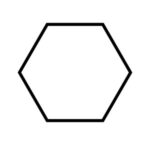Veteran wrestling commentator Jim Ross has recently addressed comments he made regarding AEW TBS Champion Mercedes Mone, clarifying his position and elaborating on his views about her current run in All Elite Wrestling. Ross, known for his decades of experience and insightful commentary in professional wrestling, initially sparked discussion among fans when he suggested that he hadn’t yet fully connected with Mone’s character in AEW.
 Mercedes Mone at AEW All In, Jim Ross Discusses Her AEW Career in Recent News
Mercedes Mone at AEW All In, Jim Ross Discusses Her AEW Career in Recent News
Speaking on his popular podcast, “Grilling JR,” Ross took the opportunity to clarify his earlier statements, emphasizing that his words were not intended as disrespect towards Mone. He explained that his perspective stemmed from observations about her booking and the storylines she has been involved in since joining AEW. Ross stated, “One thing that’s on my mind that I want to clear up Connie, is that I said something regarding Mercedes Mone, that she had not rung my bell, shall we say. That was no disrespect meant to her.”
Ross elaborated that a wrestler’s ability to connect with the audience is heavily influenced by their storylines and the opponents they work with. He suggested that Mone’s character development might have been hindered by a lack of substantial storylines, preventing fans, including himself, from fully engaging with her on-screen persona. “It all depends on how you’re booked and who you’re working with, and the scenario, the storyline. And I think she’s been short of storyline. And so therefore, I haven’t got to feel that grit and that aggression,” Ross noted.
Despite his comments about character connection, Ross was quick to praise Mone’s athleticism and overall talent. He acknowledged her as a “significant investment” for AEW and expressed anticipation for her future storylines. He highlighted the challenges of building a strong connection with fans when a wrestler is involved in a series of “one-off” matches, lacking the depth of personal feuds that often resonate with audiences. “She’s very athletic and she’s a beautiful woman, but golly. She could be used a lot more efficiently; I think I’m not knocking the company. But she’s a significant investment, and I’m anxious to see how it all works out,” Ross admitted.
However, Ross remains optimistic about Mercedes Mone’s future in AEW. He believes that with compelling storylines and meaningful rivalries, Mone has the potential to further solidify her connection with the AEW fanbase. He reiterated his admiration for her professionalism and attention to detail, noting her dedication to her presentation, from ring attire to entrance music. “I wholeheartedly agree. I like her. She’s very personable. She takes a lot of pride in what she wears, and her music and all those things that a lot of talents just take for granted and move on about their business. Not her, she pays attention,” Ross affirmed.
In conclusion, Jim Ross’s clarification provides valuable insight into his perspective on Mercedes Mone’s AEW journey. While initially suggesting a lack of connection, his comments are rooted in a desire to see Mone utilized to her full potential through engaging storylines. Ross remains a fan and believes “the best is yet to come” for Mercedes Mone in AEW, reassuring fans that his observations were intended as constructive criticism, not outright disapproval.
